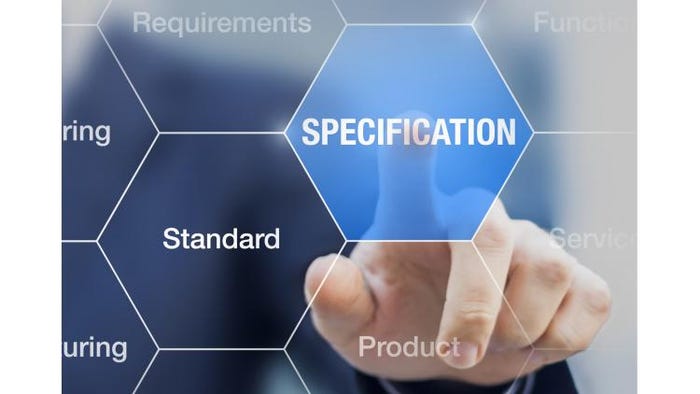Food packaging safety: How to avoid documentation disaster
August 15, 2016

All you need to know about creating documents intended to protect consumer safety and the mutual interests of end users and suppliers. Before you respond “So?” know that the least exciting part of your job may represent the most important quality and safety protection for your company.
Readers: I know what you’re thinking! “Oh no, not another sermon from Gary imploring me to create (better) technical documents?”
Well, okay, you’re right; it IS another one of those “best practices” articles, BUT……I have an excuse. It has occurred to me based on actual experiences that many, if not all, of the clients I’ve represented in adversarial matters (legal-speak for “claims and lawsuits”) would have benefitted financially to the tune of six or seven figures if they had created, issued and followed better, more comprehensive technical documents.
Specifically, I’m referring to:
Component and product specifications (raw material, in-process and finished products);
Work instructions;
Test methods;
Criteria for success (verbal descriptions with illustrations);
Adjustment manuals complete with references, illustrations and test protocols;
Operating guides with illustrations and examples;
Troubleshooting guides;
Product Data Sheets;
Raw material pre-use and finished product pre-ship quality inspection manual.
If you haven’t been in a position where products, documents or other items “under your control and on your watch” have come under legal fire and scrutiny, you’re lucky, believe me. All it takes is one experience wherein a high-level big-shot in your organization or, worse, a regulatory representative, has you “on the carpet,” grilling you as to why you didn’t do this, why you allowed that to occur or why you or your staff appeared to be “asleep at the switch,” failing to identify and correct the obvious. Worse, once YOU start reviewing the paper trail, documents and related processes, you will ALWAYS, and, I repeat, ALWAYS, observe errors and omissions that leave you speechless.
Some of those mistakes may or may not be your direct fault or a result of an oversight on your watch, but, regardless, the undeniable fact is that you will identify them as being foreseeable, preventable or correctable…after the fact, or course, once the insomnia-creating event has already happened. Worse, following the inevitable, dreaded “lessons learned” session, when the facilitators and stakeholders rake you over the coals again, it will be exposed that corrective or preventative action steps had been ideated, documented (somewhere) and considered, but never streamlined or implemented.
The connection to food safety is this: Process is connected to quality, which is directly connected to safety in the food industry. Regardless of whether you provide the raw packaging material, convert and process that raw material with other substances, manufacture the equipment to support conversion processes or add the food to the package, you are in a position to control quality and food safety.
If the package material or finished package properties are not designed, converted or used with limits and controls in place, the quality is bound to be affected. Since packaging is created to protect the product, control the conditions surrounding same (moisture, spoilage, oxygen, shelf-life, integrity, configuration, portioning) and function as an enticement to purchase, we assume that there are absolutes, ranges, controls and other parameters intended to limit and control suitability. It is imperative that well-advised limits and safety checks are comprehensive, well -written, understandable and accompanied with practical guidance and illustrations.
How many times have you purchased an item and found what you considered to be simple aspects of instruction and “quick startup” to be non-understandable, missing or buried in an improperly described section? Using your own experiences will give you guidance on just how broad, detailed and comprehensive your documents need to be.
Material specifications
Let’s begin with the most basic of control documents: the packaging material or component specification.
You buy, use, convert and/or sell a food packaging component, material or product. Regardless of whether it is unique, customized or a commodity, it needs to have a comprehensive, fully descriptive item or material specification. That spec must describe what it is by trade and generic name. The first section of the spec should explain the intended and expected (typical) uses. While a food packaging grade component might also be used in the manufacture of industrial goods, its intended use for the sake of this example is in food packaging. Give the user a general description of the fact that it’s used to convert rigid, semi-rigid or flexible food packaging.
Description
Since it is suitable for use in food packaging applications, provide the user with all regulatory reference numbers and documents.
Use descriptions
It is in the best interests of supplier and end user to disclose and describe intended uses and applications, limits and exclusions. Add a “recommended uses and suitability” or similar section describing typical uses as well as food applications where an alternate grade or type product would be more suitable. Do not hesitate to include exclusions, warnings, limits and related guidance based on industry experiences, practical expectations and physical/chemical composition.
Composition, layers and materials
Next, add a section to list and describe components, layers or appliqués, coatings or processing aids, completely describing the exact composition of each. Avoid describing subcomponents as a “confidential trade secret” and use of nonspecific and unhelpful nomenclature. If, for example, one of the layers was purchased from a third-party supplier as an intermediate component intended for lamination into the finished film or part, define it (e.g. “multilayer blended PE coextrusion” or similar) at least in general terms, if confidentiality is truly critical.
Be detailed, concise and use language, units of measure and related info that the average packaging engineer can understand or easily covert. I suggest U.S. and metric. Make sure that you use accurate and verifiable language and data taken directly from your supplier’s material data sheets.
If the vendor disclosure and other documents in your possession do not include valid information needed to adequately and accurately populate the materials section of your specification, contact your supplier and request complete or revised technical specifications and data disclosure in advance of completing your specification.
Dimensions
The next section describes the dimensions of your product. Include all dimensions of the item including inside, outside, roll, core etc. Add weights to this section including weights of individual parts, cases, impressions etc.
Physical/chemical properties
Create and populate physical/chemical properties. Include properties that will be critical to customer performance and abuse. WVTR, OTR, porosity, permeability, strength, burst, puncture resistance, etc. IF the structure or part includes “active” or intelligent functionality, quantify limits and qualify expectations.
Tolerances, variations and defects
Add a section to describe the quality and quantity of allowable defects, expected variabilities and tolerances, with maximum values or a standard description called out in a separate column for each characteristic in the section.
Sensory characteristics
A very helpful and often overlooked section in packaging specifications refers to “sensory characteristics.” Describe the expected odor or taste of the components as well as the color and visual texture. Characterizing them as “matches standard (reference)” is acceptable if there is also a corresponding description that would be helpful to a packaging tech or material control resource. Examples of honest and accurate sensory descriptions might include “odorless/tasteless” or “slight odor characteristic of (define)” with added language to connect it to a standard that the reader can obtain and compare using a repeatable test method. Sensory descriptions can include typical absence of odor or flavor, accompanied by descriptive specificity. Use of the boilerplate “no off odors” or similar unspecific language will do more harm than good in the event of customer allegation of sensory non-conformance, underperformance or taint. Be sure to reference test methods by ASTM, AOAC, TAPPI or other name and number. If the test method is unique or proprietary, provide an asterisked explanation in the event the customer desires to obtain the method and equipment to perform it.
Next: More crucial considerations

In-process instructions for internal specs
When the specification is being created for internal or in-process control, it is most effective when it contains step-by-step instructions for manufacture or conversion and quality or conformance. Each step must reference a material or component, a process and a standard description linked to process capability and expected characteristics. Link target qualities to process equipment and material adjustments using language and techniques familiar to operators.
Finally, there must be measurable criteria for success for completion of the step. Obviously, test criteria, methods and outcomes must be included. Specifics are critical. Single sentence instructions with no guidance or references (to observable standards) must be avoided. Illustrations, photos and examples of target, minimally acceptable and minimally unacceptable quality are also helpful. Process instructions, test criteria and methods can be located in a standalone document, but since the specification estate will most likely be electronic, link the manufacturing process to it for convenience.
Finished product and in-process machinability
Describe the type of equipment, generic or specific, on or with which the item or part will and should be handled. Quantify target and maximum recommended line speed, force, compression (top-to-bottom, side-to-side), dwell, environmental conditions and similar information intended to assist materials handlers and customers as well as characterize limits of the material.
Shipping, handling and storage
Add sections which describe how the packaging is to be contained, protected, secured and shipped. Clearly state where codes for “date of manufacture” and batch or lot number descriptions can be found. Explain to the customer what those codes mean and/or how to decode them. It is acceptable to describe the batch/lot number as “alphanumeric, not decodable by customer” if that is the case.
Explain who can decode it in the event of a conformance issue. Describe the conditions under which the packaging needs to be handled, shipped and stored (temperature, humidity, environment, weight, equipment, etc.), the shelf life from date of manufacture and the maximum age of the packaging when received by the customer.
User guidance and limitations
Many suppliers add language to a spec which cautions general risks of use. The statement essentially advises that since each use and user is unique and outside the control or full understanding of the manufacturer, no warrantee, specific outcome or performance characteristics can be assured or predicted. Add any standard descriptive language not previously contained regarding use limits (consumer reuse, microwaving, temperature limits, dishwasher suitability etc.) affecting safety and performance.
Drawings, illustrations and design
Create a section for design and mechanical/CAD drawings. Create a mechanical drawing with all of the data and illustrations that you and the customer need to measure, evaluate, analyze and assess each aspect and feature of the item. Include radii, measurements, tolerances, features, close-up detail of intricate areas, sectional blowups of tops, bottoms or side features and functions, etc. Add revision dates and descriptions. Provide illustrations, detail and explanations describing crucial aspects of the item, e.g. coloration, graphic size, detail and accuracy, dimensional locations of features such as peelable lidding or attachments.
Special features and accessory documents
Additional sections or documents should be added to describe specific features of specialty packaging or specialty preparation. For example, packaging which is expected by the user to be sterile, sanitized, or similarly prepared and evaluated or tested to validate those conditions for safety and suitability should include quantitative and qualitative criteria for use such as a microbiological properties section with explanations of methodology and any helpful guidance.
Regulatory
Add additional sections to include 21CFR regulatory data and information. For materials with sensitive, restricted, at-risk, controlled or regulated components, add in sections referencing CA Proposition 65 callouts and limits, industry guidelines, compendial limits (USP/FCC, for example) and global/international (WHO/JECFA) substance guidelines and limitations.
Sustainability and recycle
Add disclosure and guidance relating to rework, sustainability, recycle, green etc.
Testing and Methods
Typically, specs include a column on each page to include target, minimum and maximum values or standard descriptions representing expected outcomes. Included in that column are references or descriptions of test methods. Usually, the methods have a number and are linked to a certified standards authority. They can also be described as a “manufacturer method” (Company X # 123, for example). In that case, customers must be provided with the full method including revisions, a challenging task.
References and relevant miscellaneous information
Like a report or bibliography, specs may include references and miscellaneous information and guidance. Remember the objective of any specification estate. It is intended to disclose, explain, document, describe, guide, quantify, qualify and assist internal and external resources from cradle to grave. In the event that anything goes wrong or is in need of investigation, many technical eyes will be reviewing the contents of the spec for anything and everything. In the event of performance issues, quality or suitability, technical experts are likely going to look for verification that the item was qualified for commercial food use which usually involves multiple levels of experimentation, scale-up and commercial manufacturing, all accompanied by documentation.
Each step of the process should be referenced by research notebook numbers, experimental item numbers, provisional approved for use/sale numbers and finally a commercial product code. If any of these references are missing from the spec and related documents, it functions as evidence of process errors or omissions. It is easier to add these references to the specification or its attachments at each step and to make sure that the final commercial item spec ports or pulls in all of the references to versions from development through commercialization, as well as post-commercialization updates and versions.
Conclusion
In my experience, specifications which are vague, limited in scope and detail, incomplete, deceptive, erroneous and interpretive or inconsistent with corresponding MSDS’ and technical data sheets not only tarnish the reputation of those who disseminate them, but expose manufacturers and suppliers to costly claims. Stated differently, a poorly written specification is the technical expert’s best friend and will be used during litigation to illustrate organization unprofessionalism, carelessness and incompetence. Creation of properly written specifications based on full disclosure, usage, regulatory and performance parameters is well worth the time and effort it takes to do it.
Next month: Recommendations for creating a comprehensive packaging process operations and troubleshooting guide
Gary Kestenbaum has 40 years’ experience in the food and packaging industries, 6 as a supplier with National Starch, 18 as a product developer with General/Kraft Foods and 15 as a packaging engineer and developer with Kraft. As senior food packaging safety consultant with EHA Consulting Group, Kestenbaum provides guidance on packaging safety and suitability-related projects for raw material manufacturers, converters and associated supporting professionals. He can be reached at [email protected] or 410-484-9133. The website is www.ehagroup.com.
About the Author(s)
You May Also Like




